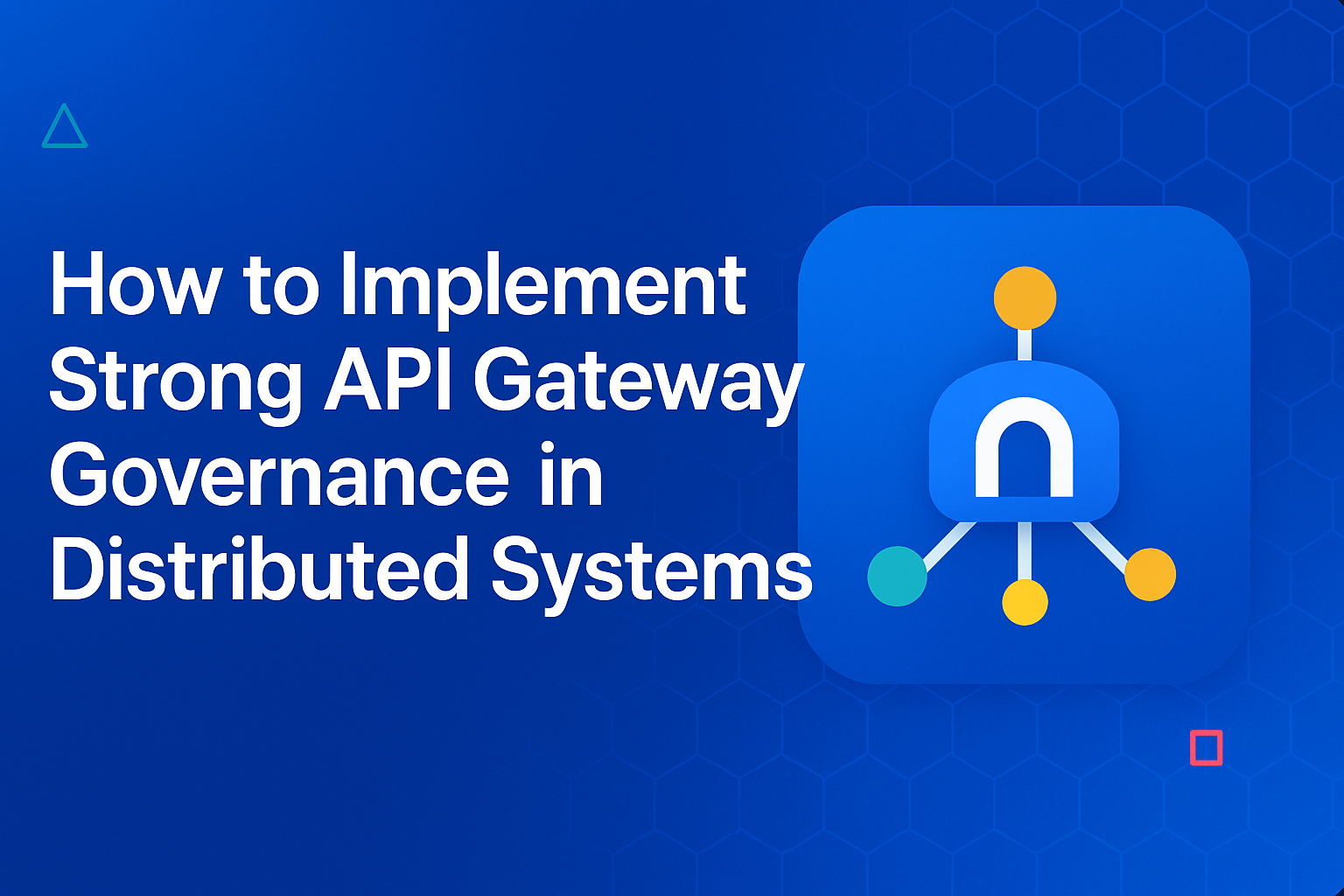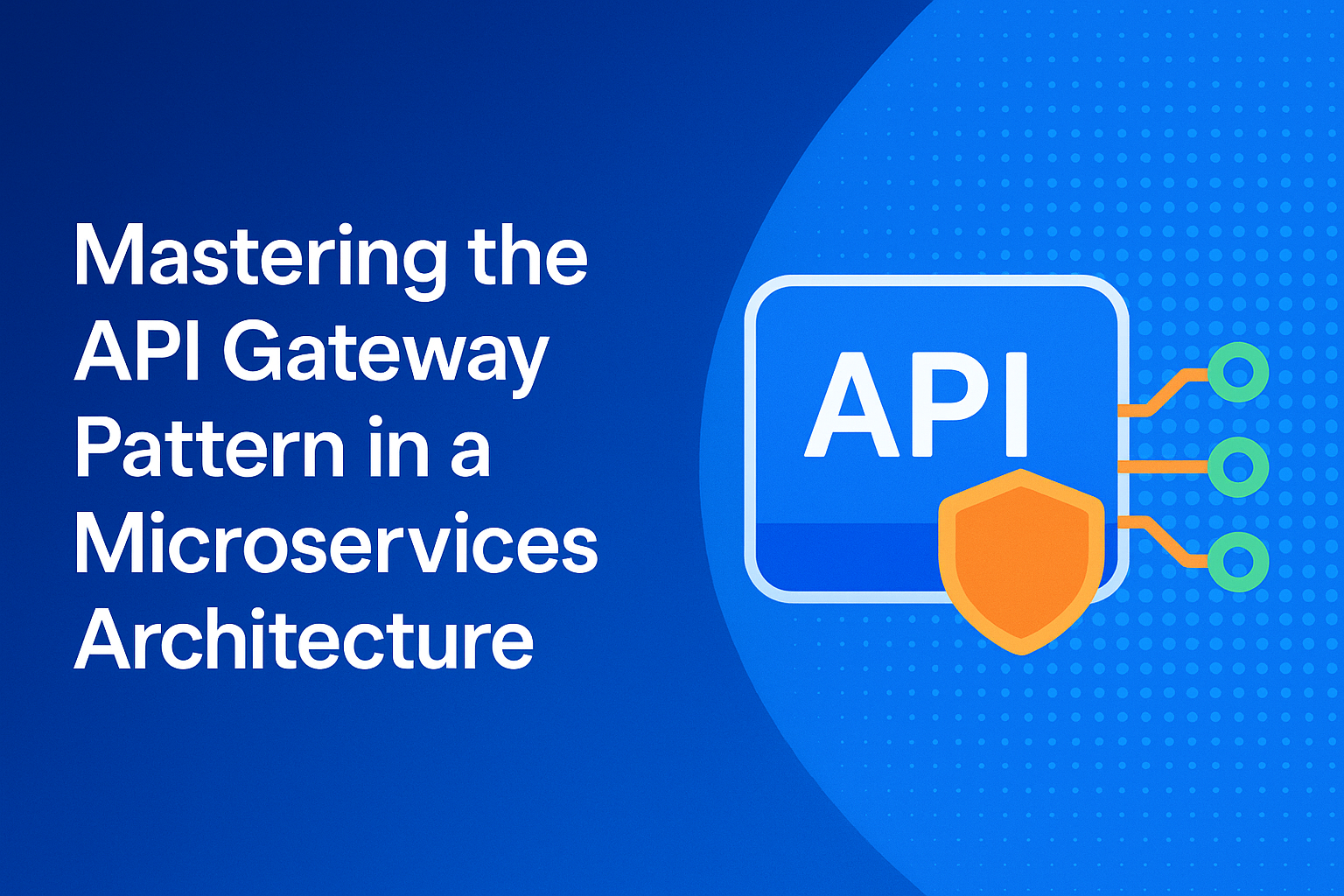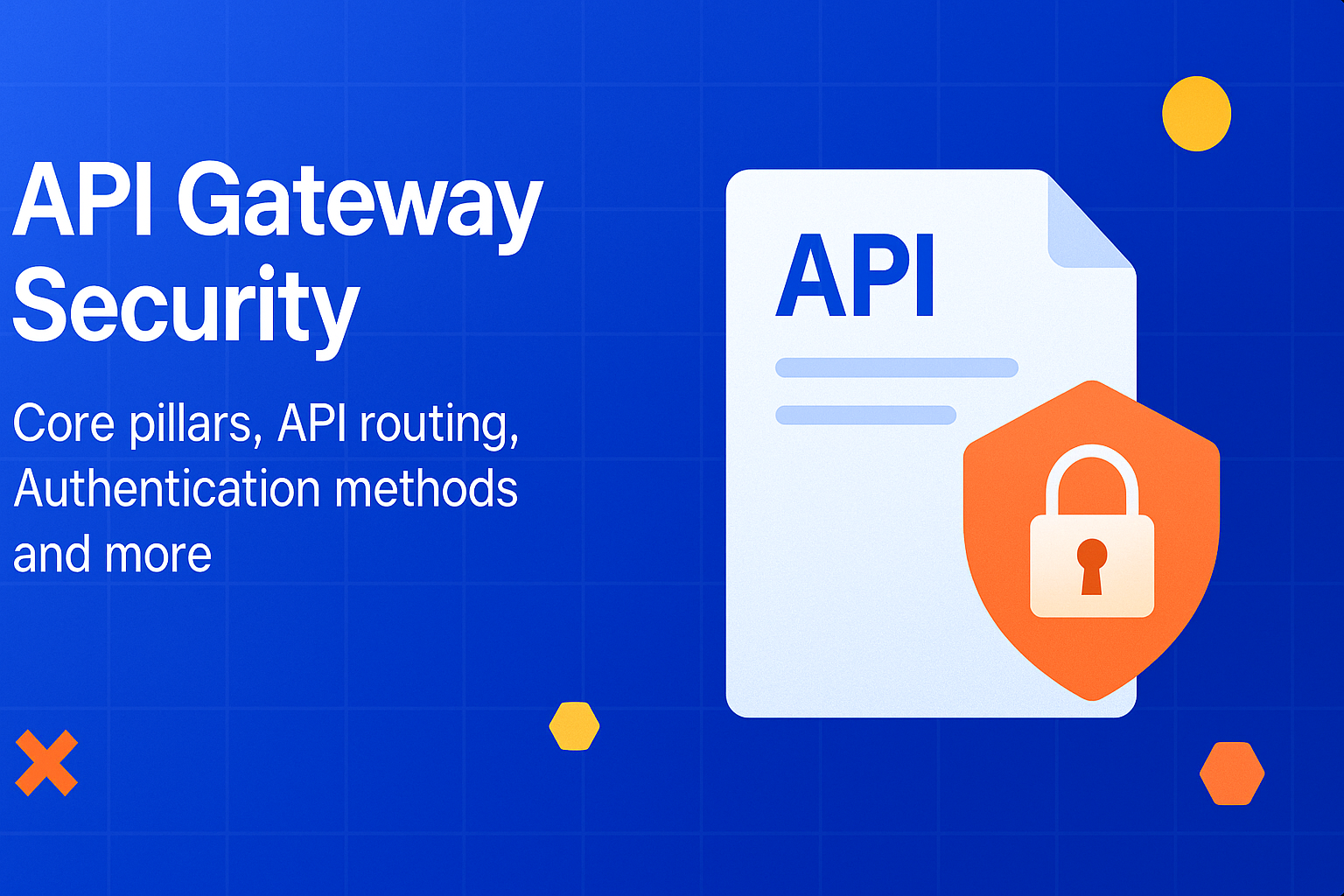.png)
Unmanaged APIs can overload backend systems or expose sensitive data, as seen in recent breaches impacting thousands of employee records. As organizations scale and adopt microservices, many teams still confuse what an API gateway handles versus what a full API management platform provides. This leads to inconsistent policies, security gaps, and growing operational complexity.
A modern API gateway platform solves these challenges by acting as the secure, centralized entry point for all API traffic. It manages routing, authentication, rate limiting, caching, and observability, while shielding backend services from direct exposure. Today’s gateway platforms also support API lifecycle workflows, governance, analytics, and multi-cloud operations.
With tools like DigitalAPI’s Gateway Manager, teams gain unified policy enforcement, real-time traffic visibility, and seamless multi-gateway control across cloud and on-prem environments. This helps organizations strengthen security, reduce fragmentation, and scale their API ecosystem with confidence and clarity.
Book a Demo to see how Helix fixes it
But here is the thing: Unmanaged traffic can cripple your backend, while a single security gap can lead to a devastating data leak.
Just recently, over 33,000 employee records were exposed as a result of unprotected APIs, according to CloudSEK. Exposed data reportedly included personal information, project/asset data, and other internal details.
What’s more? Even with modern architectures, teams often mix up what an API Gateway does versus what a full API management platform should handle. That confusion can lead to bottlenecks, security blind spots, poor visibility, and developer experiences that fall flat. Even worse, as your ecosystem grows, so does the chaos, which can turn simple updates into costly fire drills.
This is where a dedicated API gateway platform becomes your most critical piece of infrastructure. With the right platform and a clear understanding of how broader API management platforms fit into the picture, you can streamline API traffic, tighten security, and scale with confidence.
In this guide, we’ll explore the following areas:
- What is an API gateway platform?
- Key components of API gateway products
- Types of API gateway platforms
- Benefits of using a modern API gateway platform
- Real-world applications of API gateway platforms across industries
What Is an API Gateway Platform?
An API gateway platform is a centralized entry point for client applications to access multiple backend services. It offers API routing, protocol translation, security enforcement, and monitoring in one layer. API gateway platforms also streamline service access by exposing a unified API surface while abstracting the complexity of multiple services behind the scenes.
Beyond that basic description, a full gateway platform enables workflows around the entire API lifecycle from design, deployment, versioning, traffic management, analytics, and even monetization. It supports microservices and distributed architectures by simplifying how clients interact with backend services, enforcing policies, providing caching or transformation, and exposing usage metrics.
A prime example of API gateway platforms is DigitalAPI. The platform offers a robust gateway manager that offers plug-and-play deployment of APIs, full traffic control, security policy enforcement, response-caching, and routing across cloud, edge, or on-premise environments. The platform also provides a unified API catalogue, real-time analytics, and optional marketplace capabilities to support monetization of APIs.
If you’re looking to simplify your API infrastructure, speed up time-to-market, and gain full lifecycle management, explore DigitalAPI’s gateway manager and see how it aligns with your architecture needs.

What are the Key Components of API Gateway Products?
API gateway products bundle essential capabilities that help organizations control, secure, and observe API traffic. Their core components typically include traffic management capabilities like routing, load balancing, caching, and rate limiting; security features such as authentication and TLS termination; observability tools for monitoring and analytics; and development-focused capabilities like API documentation, policy controls, lifecycle management, and request/response transformation.
Here are the core components of API gateway products.
1. Core traffic management
Modern systems depend on efficient traffic orchestration, and API gateways provide the mechanisms that make this possible. These features ensure that requests travel smoothly from clients to backend services, even in complex or high-volume environments.
Here are the capabilities of API gateway platforms that help with traffic management:
- API routing: This is one of the gateway’s most visible functions. It ensures that each incoming request reaches the correct backend service based on rules like URL paths, headers, or HTTP methods. For instance, orders may route to an order-management microservice while payments are forwarded to a billing service. This is especially valuable in microservice architectures where many small services must work together.
- Load balancing: This feature distributes requests across multiple instances of a service to avoid overwhelming a single server and increases resilience. For instance, if one instance becomes unhealthy, the gateway can shift traffic to healthy ones to keep the system responsive without user disruption.
- Rate limiting and throttling: This tool helps to protect APIs from traffic spikes or malicious overuse. A gateway may allow a client to call an endpoint 100 times per minute and block or slow additional requests. This mechanism prevents resource exhaustion and ensures fair usage among consumers.
- Caching: Accelerates responses by storing frequently requested data. When multiple users request the same resource, such as product details, the gateway can serve it from cache instead of re-querying the backend, which lowers latency and reduces backend workload.
- Protocol transformation: Helps systems using different communication formats talk to each other. A gateway might convert HTTP/JSON requests into gRPC calls for backend services or upgrade a connection to WebSocket for real-time interactions. This flexibility supports mixed technology stacks without requiring service rewrites.
2. Security and access control
Security remains one of the core reasons organizations deploy API gateways in the first place. Gateways centralize protection so backend services stay simpler and safer to reduce the risk of inconsistent or overlooked security logic.
Here is how this feature works:
- Authentication: It validates who is accessing an API. Gateways commonly support API keys, OAuth 2.0 tokens, and JWTs. This centralizes identity checks so individual microservices don’t need custom authentication logic.
- Authorization: The platform determines what a verified client may do. For example, an authenticated partner may access premium endpoints, while a public user gets only basic features. The gateway enforces these distinctions using policies or role-based rules.
- Access control: It also extends authorization by defining conditions under which requests are allowed. This might include IP restrictions, usage tier limits, or time-bound access windows.
- SSL/TLS termination: The platform also manages the encryption and decryption of API traffic.
3. Observability and analytics
How would you maintain performance and troubleshoot API issues without having complete visibility and analytics data? An API gateway platform plays a major role by collecting and exposing data across all API activity in one place.
Here’s how it works:
- Monitoring: It tracks performance indicators like latency, throughput, and error rates. These metrics help operators detect and troubleshoot issues quickly.
- Logging: It also captures request and response details to enable debugging and compliance auditing.
- Analytics: These turn collected data into insights, such as identifying peak usage times, most-called endpoints, or long-running requests.
4. Development and management features
API gateways also serve as organizational tools that help developers design, deploy, and maintain APIs efficiently. These features make APIs easier to discover, safer to evolve, and simpler to manage throughout their lifecycle.
Here is how API gateway products help:
- API product listings and documentation often appear through a developer portal. These hubs help developers find available APIs, read usage instructions, test endpoints, and onboard quickly.
- API key management gives teams tools to issue, rotate, restrict, or revoke API keys. This is essential for controlling access to different API tiers or partner integrations.
- Lifecycle management guides APIs from initial design through deployment, versioning, and eventual retirement. For example, when releasing a new version, the gateway can route traffic gradually or support both versions concurrently.
- Policy enforcement lets teams define rules—such as security policies, traffic limits, or data transformation requirements—and apply them consistently across services.
- Transformation and data enrichment modify requests or responses before they reach the client or backend. A gateway may add custom headers, mask sensitive data, or reshape response formats so consumers receive data in the structure they expect.
What are the Different Types of API gateway platforms?
API gateway platforms exist in various types, each designed to handle different architectural needs, deployment preferences, and scalability requirements. Common categories include cloud-native gateways, open-source solutions, enterprise API management suites, microservices-focused gateways, reverse-proxy-based gateways, and specialized gateways such as GraphQL or AI-optimized platforms.
Let’s explore them in detail.
1. Cloud-native API gateway platforms
Cloud-native API gateway platforms provide a fully managed environment where the provider handles availability, scaling, and infrastructure tasks. They suit teams that want to integrate tightly with their existing cloud services without managing servers or complex deployments.
For instance, API gateway platforms such as Amazon API Gateway, Azure API Management, and Google Cloud API Gateway offer plug-and-play integration with serverless functions, identity solutions, monitoring dashboards, and event-driven workflows. Their biggest advantage is operational simplicity: developers configure routes and policies while the platform scales automatically based on traffic.
2. Open-source API gateways
Open-source gateways give organizations total freedom to customize routing rules, plugins, security layers, and deployment setups. They are ideal for teams that prefer hands-on control or need to run gateways in private clouds, edge environments, or on-premises systems.
Popular options include Kong Gateway, Tyk, Apache APISIX, KrakenD, and Express Gateway. These tools often support enterprise add-ons such as analytics dashboards, developer portals, and advanced security modules.
3. Enterprise API management suites
Enterprise API management platforms serve as all-in-one environments for organizations with extensive API ecosystems. They include not just gateway capabilities but also lifecycle tools, monetization features, API versioning control, governance policies, and developer onboarding systems.
For example, enterprise API management solutions like Apigee, MuleSoft Anypoint Platform, IBM API Connect, and Axway Amplify are built for large enterprises that require strict compliance, data governance, and multi-team collaboration. They support hybrid deployments, legacy modernization, workflow automation, and deep integration with enterprise service buses.
4. Microservices API gateways
Microservices-focused gateways are purpose-built to manage internal service-to-service communication. They help teams control traffic flows between distributed components while enforcing consistent policies across thousands of microservices.
For instance, tools such as Envoy Proxy, Kong, and Tyk often operate alongside service meshes like Istio. These gateways handle advanced routing, mTLS security, retries, circuit breaking, and load balancing.
5. Reverse proxy API gateways
Reverse proxies can also function as API gateways when configured with policies and routing rules. They are suited for high-performance web traffic scenarios where teams need speed and reliability more than full API lifecycle features.
NGINX is the most common tool in this category. Though originally designed as a high-performance web server, its modular nature allows it to perform authentication, caching, rate limiting, and protocol handling.
6. Specialized API gateways
Some gateways are designed specifically for emerging API models or specialized communication patterns. They offer deep optimizations that general-purpose gateways might not provide.
Examples include GraphQL gateways, WebSocket gateways, and AI-focused gateways built for model orchestration or inference traffic. These platforms address unique demands such as schema stitching, real-time bi-directional communication, or AI workload optimization.
7. Modern cloud-ready gateways
This is the growing category of API gateway platforms that combines the flexibility of open-source tools with the convenience of managed platforms. These solutions focus on automation, observability, and seamless integration with distributed environments.
A strong example is DigitalAPI, which provides a streamlined API gateway manager designed to simplify routing, security, monitoring, and policy management across complex deployments. Unlike bulky enterprise suites, this platform offers a lightweight, developer-friendly approach that works well for modern cloud and hybrid environments. It enables quick onboarding, unified visibility, and simplified governance, which makes it a compelling option for teams that want power without operational overhead.
Benefits of using a modern API gateway platform
There are numerous benefits of using modern API gateway platforms. For instance, these platforms streamline how organizations secure, manage, and deliver APIs across distributed environments. They centralize authentication, optimize traffic, simplify client interactions, and provide deep observability. By handling protocol translation, boosting scalability, and cutting operational costs, these platforms reduce complexity and improve reliability.
Here are the main benefits, briefly:
- Centralized security and unified access control: At its core, an API gateway platform acts as the single doorway into your backend systems. This gives teams a unified place to enforce authentication standards, API key checks, or IP filtering. By consolidating authorization logic, you reduce the risk of inconsistencies or overlooked vulnerabilities.
- Smart traffic management for smoother performance: High-quality gateways include rate limiting, load balancing, burst control, and intelligent routing. These tools help prevent sudden traffic surges from overwhelming backend services. They also enable caching frequently accessed responses, which reduces latency and cuts unnecessary compute usage.
- Simplified client interactions and reduced complexity: Without a gateway, clients must know the location and behavior of dozens of services. A modern API gateway platform provides a single, stable entry point, abstracting away service fragmentation. It can combine data from multiple services into one response or route requests based on user type, version, or device.
- Unified observability and actionable analytics: API gateways offer centralized logging, metrics, and real-time monitoring. This visibility is crucial for troubleshooting, performance tuning, and capacity planning. It enables teams to track error rates, response times, geographic patterns, and usage trends. For instance, with DigitalAPI’s analytics layer, organizations get dashboards that highlight bottlenecks, detect anomalies, and surface optimization opportunities.

Real-world applications across industries
As APIs continue to increasingly become the backbone of modern digital ecosystems, API gateway platforms continue to be essential for securing, monitoring, and orchestrating those interfaces across industries. From healthcare to banking and insurance, organizations rely on these platforms to manage compliance, enable safe data sharing, and accelerate innovation at scale.
Here is how different industries benefit from these platforms:
Healthcare — secure FHIR APIs and HIPAA compliance
Healthcare systems expose patient data using the FHIR standard to enable EHR integrations, patient portals, and third-party health apps. In practice, this requires: end-to-end encryption, strict authentication/authorization, fine-grained RBAC, audit logging for all Protected Health Information (PHI) access, and continuous risk assessments. API gateway platforms enforce those controls at scale while giving security and compliance teams a single place to demonstrate controls for HIPAA audits.
Where DigitalAPI helps: DigitalAPI provides a unified control plane that centralizes API discovery, governance, and security across gateways and clouds, which is exactly the kind of platform hospitals and healthtech firms use to manage many FHIR endpoints consistently. Ideally, you can use DigitalAPI to enforce policies, onboard FHIR provider integrations, and automate compliance evidence gathering.
Banking — PSD2/open banking data sharing
PSD2 and open banking require banks to expose account information and payment initiation APIs safely to regulated third-party providers (TPPs) when customers consent. Real-world patterns include: dedicated API sandboxes for TPPs, strong customer authentication (SCA) flows, separated API tiers for public vs. partner usage, and strict logging/consent records to demonstrate lawful data sharing. API gateways mediate SCA, token exchange, quota enforcement, and partner-specific routing.
Where DigitalAPI comes in: For banks implementing PSD2/Open Banking, DigitalAPI provides pre-built core banking APIs and OBL (Open Banking Limited) support, plus a centralized dashboard to manage partner onboarding, API SLAs, and monetization models. You can also use its gateway manager to isolate production traffic, test in sandboxes, and automate the consent/audit trails that regulators require to speed compliance while preserving rigid security controls.
Insurance — partner API management and claims automation
Insurance ecosystems rely heavily on partner integrations, including brokers, repair shops, and medical providers. Real deployments use partner-specific APIs, event-driven claims workflows, and automated ETL between policy & claims systems. Gateways and API marketplaces are used to expose partner contracts, manage versions, and secure partner credentials.
Where DigitalAPI helps: Insurers can use DigitalAPI’s API marketplace and Gateway manager to publish partner APIs, control access per partner, and instrument automated claim flows. The unified control plane can then simplify lifecycle management: versioning, developer onboarding, and measuring ROI on shared APIs.
Take Control of Your API Future Today
The complexity of your API landscape doesn't have to be a liability. In a world where APIs power every digital touchpoint, the right gateway strategy can make or break your scalability, security, and speed of innovation. Modern architectures demand more than simple routing. They require unified governance, real-time insights, airtight security, and frictionless developer experiences. That’s exactly where DigitalAPI stands out. The API gateway platform centralizes policy enforcement, simplifies multi-gateway operations, and provides a powerful control plane for cloud, hybrid, and on-premises deployments, which helps teams eliminate chaos and unlock true API agility.
Ready to streamline your API infrastructure, strengthen compliance, and accelerate product delivery? Explore DigitalAPI and start transforming your API ecosystem with clarity, confidence, and control. Book a demo here today!
FAQs
1. What’s the difference between an API Gateway and an API management platform?
An API Gateway handles request routing, security enforcement, and traffic control, acting as the entry point for APIs. An API management platform goes further to offer lifecycle management, analytics, developer portals, monetization, and governance. Think of the gateway as the engine, and full API management as the entire operating system.
2. Why are API gateways essential in microservices architectures?
Microservices rely on distributed components that must communicate efficiently and securely. API gateways centralize routing, load balancing, authentication, and protocol translation, reducing complexity for each service. They also unify observability and enforce consistent policies, making microservices easier to scale, debug, and evolve without breaking client applications.
3. How do API gateways strengthen security across distributed systems?
API gateways centralize authentication, authorization, rate limiting, and TLS termination to ensure all API traffic passes through a consistent, enforceable security layer. This prevents fragmented security logic across services, shields backend systems from direct exposure, and provides unified logging and auditing for compliance frameworks like HIPAA, PSD2, or PCI-DSS.
4. How does DigitalAPI improve multi-gateway or multi-cloud API operations?
DigitalAPI provides a unified control plane that manages configuration, policies, analytics, and lifecycle tasks across multiple gateways or cloud environments. Instead of juggling separate consoles, teams gain centralized visibility, automated governance, and consistent security enforcement, which makes hybrid, multi-cloud, or large-scale API infrastructures dramatically easier to run and optimize.
You’ve spent years battling your API problem. Give us 60 minutes to show you the solution.
.svg)







